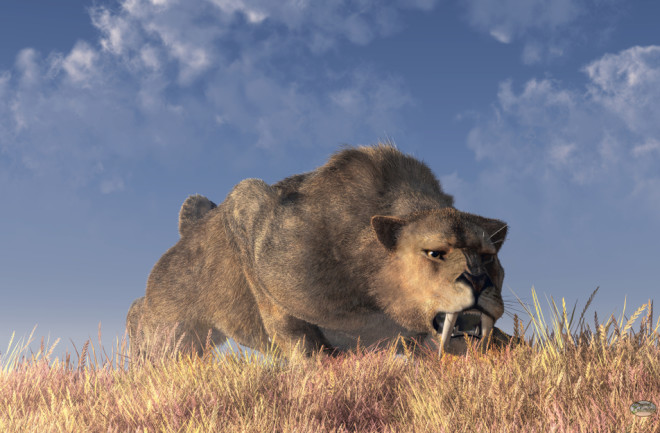The issue of inbreeding is not limited to captive animals, it can also affect endangered populations in the wild. This is evident in the case of the Florida panther, a highly threatened species with only around 200 individuals remaining in the wild. Due to the small size of their gene pool, these panthers often suffer from various health problems such as misshapen tails, heart defects, undescended testicles, and joint disease. Recent research has revealed that these endangered panthers share a common ailment of joint disease with two extinct species, the dire wolves and the sabre-tooth cats, which lived thousands of years ago during the Last Ice Age. It has been found that up to 7 percent of these ancient predators had a disease called osteochondrosis dissecans (OCD), which is also found in humans, domesticated dogs, and other vertebrates. OCD occurs when a piece of bone loses blood flow and detaches, causing damage to the cartilage within the joint. The high incidence of this disease among these ancient species may indicate the dwindling populations as they approached extinction.
The study conducted by Hugo Schmökel, a veterinary orthopedic surgeon from Sweden, along with two researchers from the La Brea Tar Pits and Museum, examined over 1,000 bones from sabre-tooth cats and 500 bones from dire wolves. These bones were recovered from the famous Rancho La Brea asphalt seeps in Los Angeles, California, which were discovered in 1769. The seeps were traps for prey animals, and predators like sabre-tooth cats and dire wolves were attracted to these areas by the commotion caused by the trapped prey. Eventually, some of these predators also fell into the sticky asphalt and got stuck themselves. Today, the seeps are protected by a fence, but excavations have been carried out since the early 1900s, resulting in the preservation of thousands of bones from these ancient predators. Among these bones, researchers found numerous examples of bone lesions suffered by both species during their hunts for large prey.
This study is one of the few that have investigated skeletal diseases in wild animals, and it revealed surprising similarities to modern humans. Ancient sabre-tooth cats and dire wolves, like us, tended to have OCD damage primarily in their shoulder and knee bones. The researchers state that the long history of this debilitating disease highlights the importance of monitoring animal conservation and avoiding unexpected outbreaks of OCD, particularly in cases of inbreeding.
Are you already a subscriber? If not, you can register or log in to access more intriguing articles for as low as $1.99. Subscribe now to continue reading!
